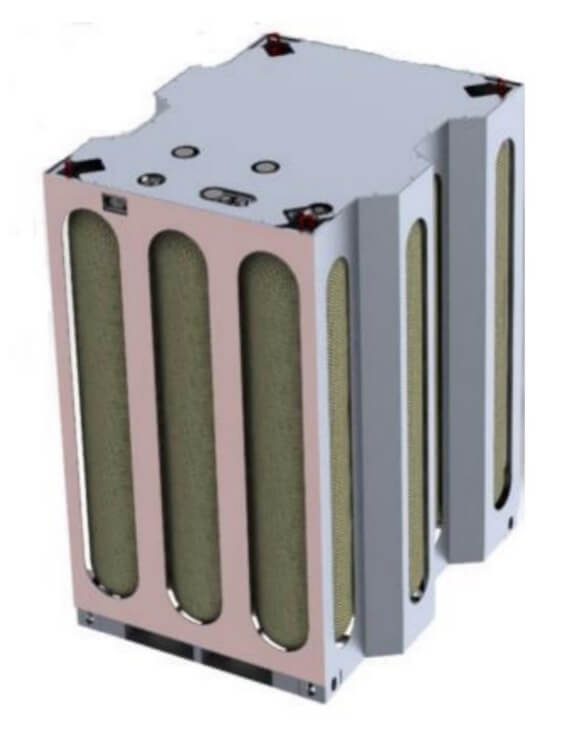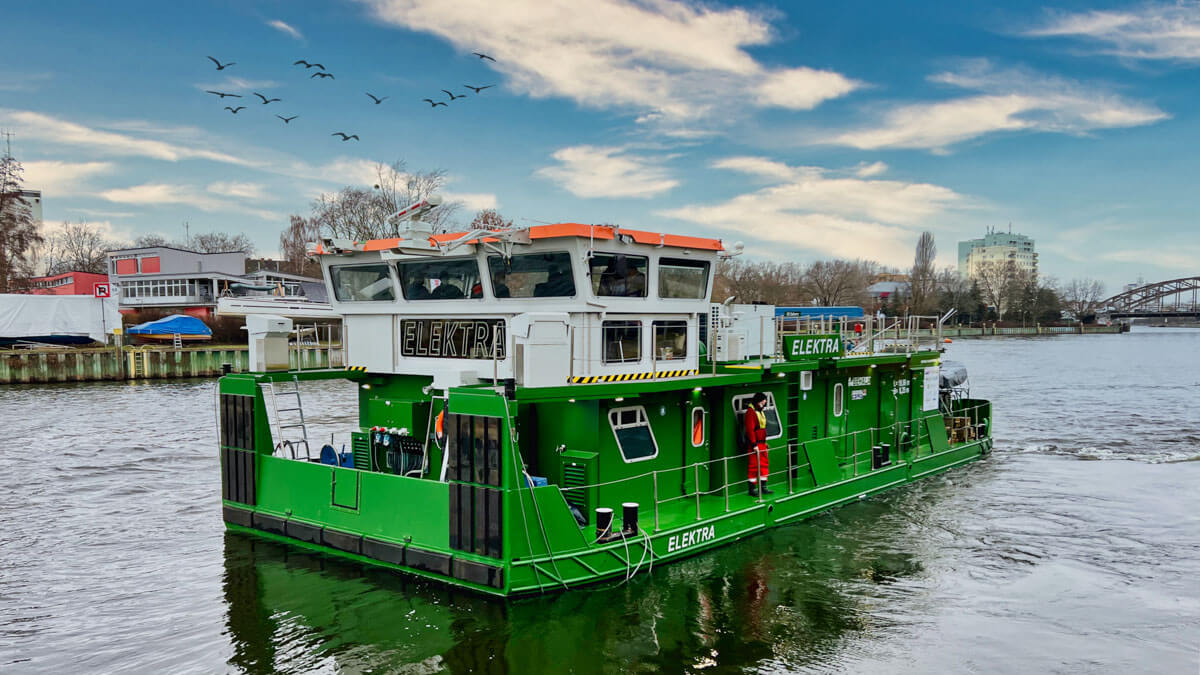
Lighthouse project:
Canal push boat ELEKTRA
The realisation of the canal barge “ELEKTRA” by BEHALA (Berliner Hafen- und Lagerhausgesellschaft mbH) and TU Berling (Department of Design and Operation of Maritime Systems (Prof. Gerd Holbach) focused on the climate policy goals of the Federal Republic of Germany. The aim was to show that it is possible to make inland navigation CO2-neutral, especially in conurbations.
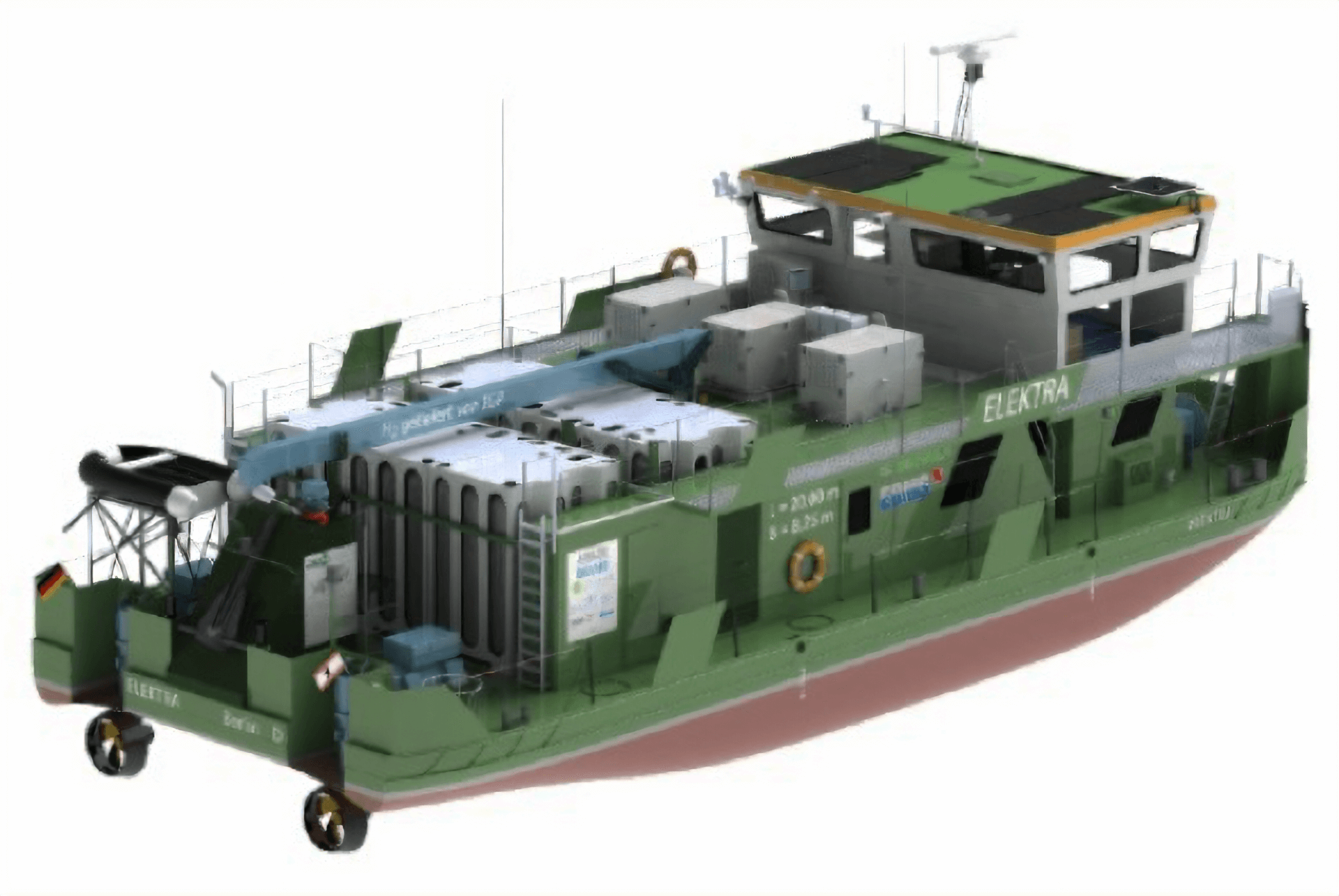
Under the project management of the TU Berlin, the companies BEHALA (port and logistics service provider), Schiffswerft Herrmann Barthel, BALLARD Power Systems (fuel cells), Argo-Anleg (hydrogen supply system), Schiffsselektronik Rostock, EST-Floattech (accumulators) and Imperial logistics (shipping company) were involved in the development and construction of the ELEKTRA as partners.
In doing so, the ELEKTRA takes on a model function as an emission-free ship with regard to ecological requirements, especially within sensitive regions (e.g. conurbations such as Berlin/Brandenburg, Hamburg, Rhine-Ruhr).
Hereby, the ELEKTRA takes on a model function as an emission-free ship with regard to ecological requirements, especially within sensitive regions (e.g. conurbations such as Berlin/Brandenburg, Hamburg, Rhine-Ruhr region).
Parallel to the construction and testing of the ELEKTRA, accompanying infrastructural measures were carried out in the area of electricity and hydrogen supply (logistics) in the ELEKTRA’s navigation area for inland navigation.
With a total project volume of about 14.6 million euros, the project was funded by the German Federal Ministry of Transport and Digital Infrastructure (BMVI) with about 9.1 million euros and supervised and coordinated by Project Management Jülich (PTJ) and the National Organization for Hydrogen and Fuel Cell Technology (NOW).
The ELEKTRA was not only about providing energy for the ship’s propulsion and the pushing of thrusters, but also about energy for the crew, who live, cook and wash on board. Furthermore, energy must be provided for the temperature control of the rooms and the wheelhouse. The accumulators also need a certain “comfortable temperature” for efficient operation and a long service life. All this must function with a limited amount of energy carried along and without loss of range.
To ensure this, for example, the waste heat from the fuel cells is used through consistent water cooling and the rooms are heated via a brine heat pump. It is an advantage that the ship always has water available with temperatures above 0° C under the keel.
With 750 kg of usable gaseous hydrogen at a pressure of 500 bar on board and a battery capacity of approx. 2,500 kilowatt hours, the ship has a range of approx. 400 kilometres in a pushed convoy with the loaded heavy-lift lighter URSUS. Therefore, in the trade lanes from Berlin towards the Rhine/Ruhr, Hamburg and Szczecin, only one additional shore station is needed to supply the ELEKTRA with hydrogen and electricity in addition to the Westhafen en route. In total, convoys of up to 150 m in length can be operated.
Both in Berlin’s Westhafen and in the port of Lüneburg, the first stations for changing hydrogen tanks and electric charging stations in the required power class of 500 kilowatts will go into operation in 2023.
The TU Berlin has concluded a supply contract with the Industrie- und Gewerbepark Mittelelbe/H2 Green Power & Logistics GmbH for filling and transporting the tank systems (multiple-element gas containers – MEGCs) developed by Argo-Anleg with green hydrogen until the end of the project term at the end of 2024.
Inauguration in Berlin
On 16 May 2022, the ELEKTRA was christened in Berlin’s Westhafen by the Mayor of Berlin Franziska Giffey. After almost two years of construction at the Germann Barthel GmbH shipyard in Derben and the transfer to Berlin’s Westhafen, this marked the beginning of the long-term testing of this unique, innovative and emission-free push boat.
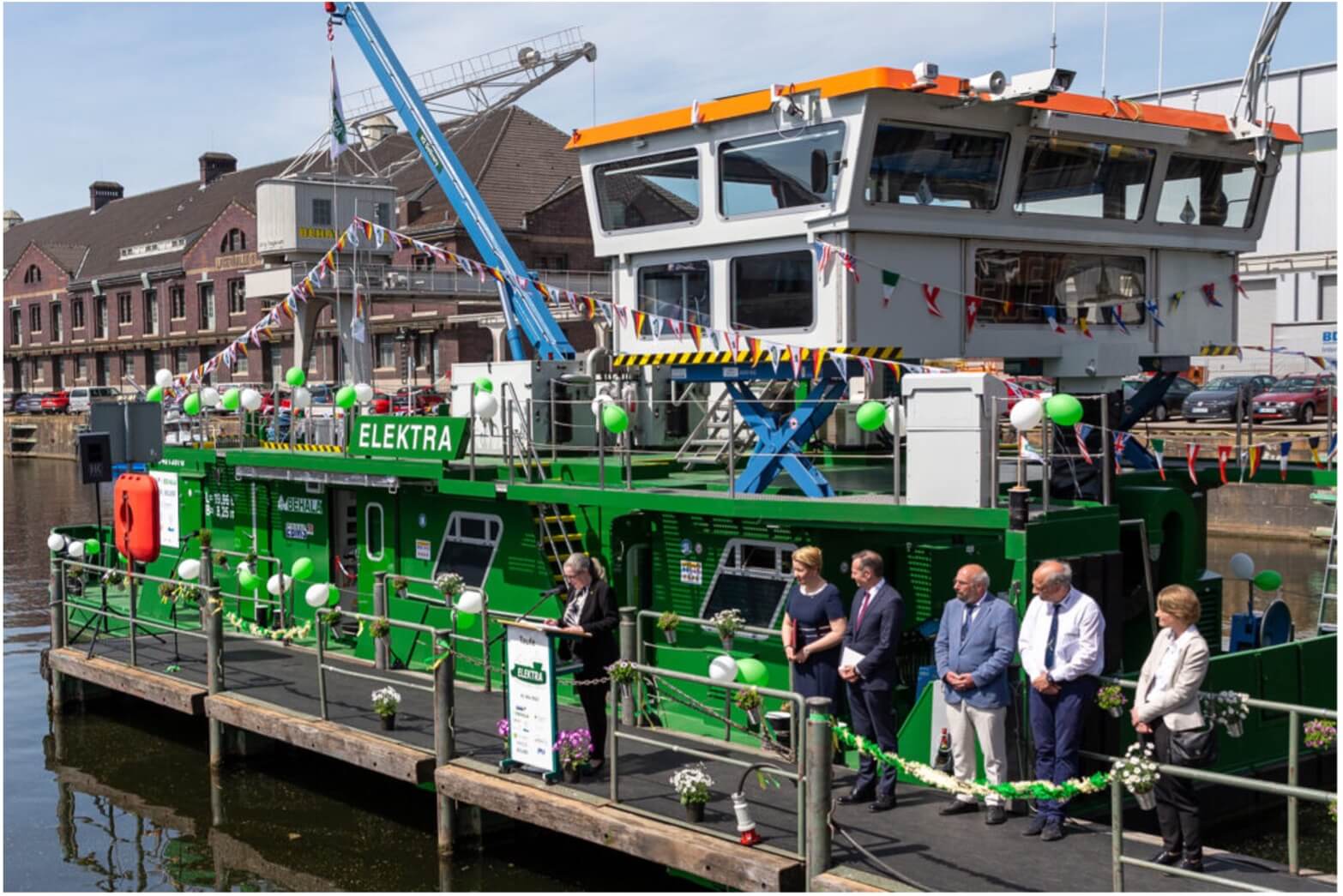
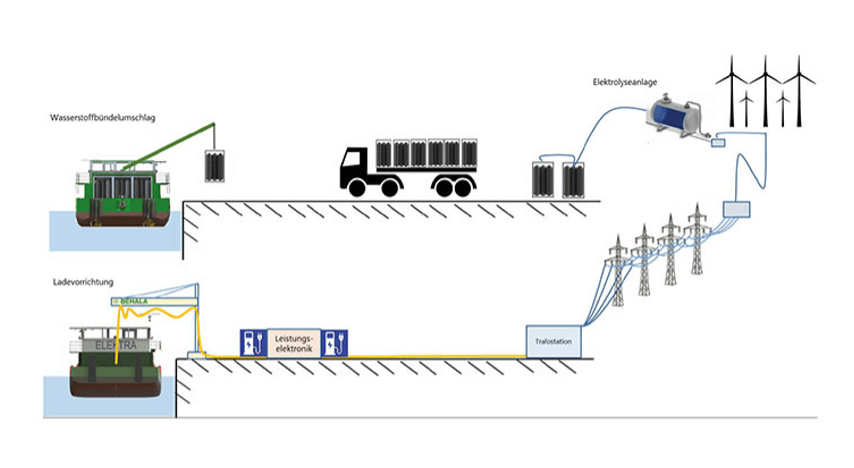
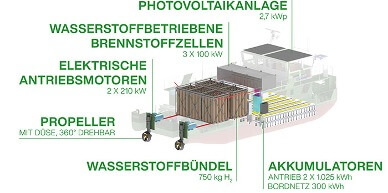
Swap container H2 tank system (MEGCs)
The swap container tank systems (MEGC) can be exchanged with an on-board crane and the power connection is made via a loading gallows where the cables are routed on shore. This makes it very easy for the ship’s crew to handle the cables, which are as thick as arms, and the ship is connected to the charging station in a short time and the pier is free of cables.
To make this possible, the ship has to be equipped with a crane.
To be able to provide the ELEKTRA’s necessary electrical propulsion power of 420 kW, 3 hydrogen-powered fuel cells are provided, each with an output of 100 kW. Furthermore, the push boat is equipped with accumulators with a total storage capacity of 1,325 kWh, whereby 1,025 kWh are provided for the propulsion and 300 kWh for the on-board network. Furthermore, a photovoltaic system with a maximum output of 2.7 kWp is installed on the driver’s cab roof of the ELEKTRA.
